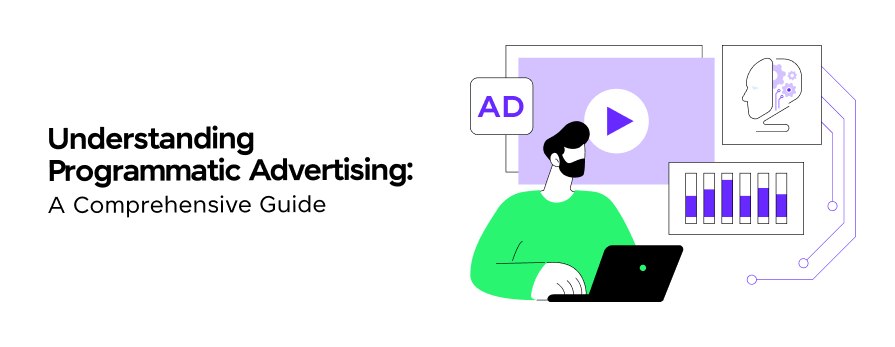
Understanding Programmatic Advertising: A Comprehensive Guide
Mar 13, 2025 6 Min Read 2731 Views
(Last Updated)
If you’re looking to transform your digital marketing strategy, then programmatic advertising might be the game-changer you need. In simple terms, programmatic advertising automates the buying and selling of ad space using advanced technology. Unlike traditional methods that rely on manual negotiations, programmatic advertising uses real-time data and algorithms to ensure your ads reach the right audience at the right time. This approach streamlines the ad buying process while enhancing targeting and personalization, making your campaigns more efficient and effective.
Instead of guessing where your audience might be, programmatic advertising allows you to place ads where they will be most effective. This precision not only saves time and resources but also maximizes your advertising impact. Let’s explore the world of programmatic advertising and see how this innovative approach can boost your marketing strategy.
Table of contents
- Key Components of Programmatic Advertising
- Real-Time Bidding (RTB)
- Demand-Side Platforms (DSPs)
- Supply-Side Platforms (SSPs)
- Private Marketplaces (PMPs)
- Programmatic Direct
- How Programmatic Advertising Works?
- Why Use Programmatic Advertising?
- Efficiency and Time-Saving
- Improved Targeting and Personalization
- Real-Time Data and Analytics
- Cost-Effectiveness
- Scalability and Flexibility
- Trends in Programmatic Advertising
- Contextual Advertising
- Connected TV (CTV) Advertising
- Video Ads
- Privacy and Transparency
- AI and Machine Learning
- Challenges and Considerations in Programmatic Advertising
- Ad Fraud and Solutions
- Privacy Concerns and Compliance
- Complexity of the Ecosystem
- Choosing the Right Platforms
- Ensuring Quality and Brand Safety
- Examples of Successful Programmatic Advertising
- Google Ad Manager
- Adobe Advertising Cloud
- MediaMath
- Final Words
- Frequently Asked Questions
- How can programmatic advertising improve brand safety?
- How does programmatic advertising integrate with other digital marketing strategies?
- Can programmatic advertising be used for both branding and performance marketing?
- How does programmatic advertising ensure privacy compliance?
- How can I measure the success of my programmatic advertising campaigns?
Key Components of Programmatic Advertising
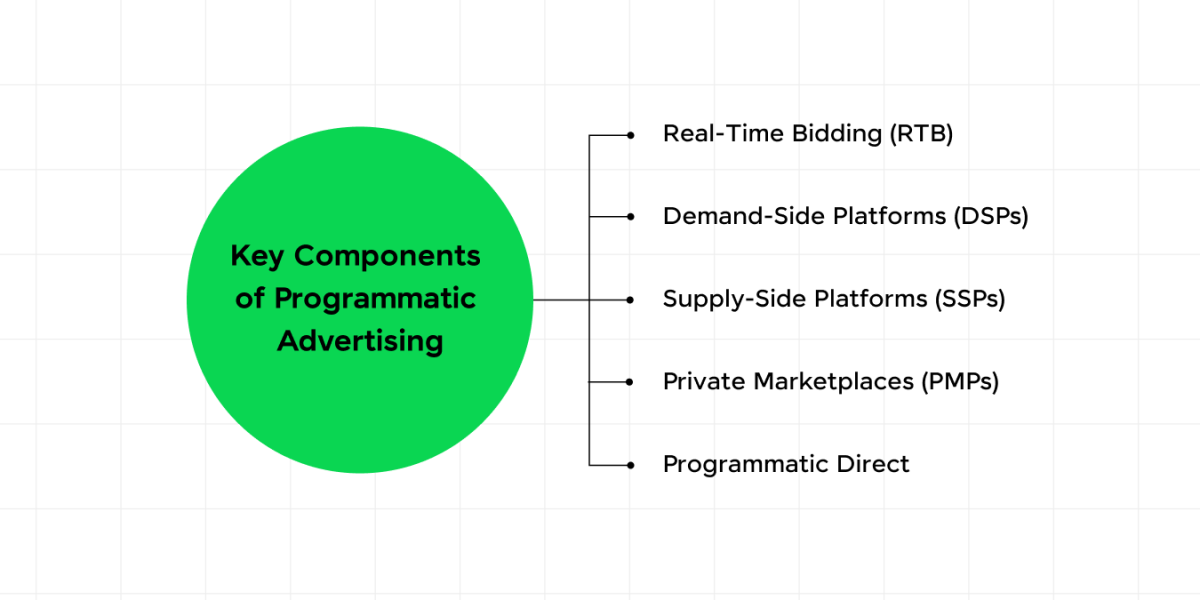
To fully understand how programmatic advertising operates, it’s essential to look at its core components. These elements work together to automate and optimize the ad buying and selling process, ensuring ads are served to the most relevant audience.
Real-Time Bidding (RTB)
Real-time bidding is the most common form of programmatic advertising. RTB involves bidding on ad impressions in real-time, as the page loads. Advertisers compete in an auction, and the highest bidder gets their ad displayed. This process happens within milliseconds, ensuring that ads are served to the most relevant audience.
Demand-Side Platforms (DSPs)
DSPs are platforms that allow advertisers to purchase ad inventory from multiple ad exchanges. They provide tools for setting up and managing ad campaigns, including targeting options, bidding strategies, and analytics. Examples include MediaMath and Google Display & Video 360.
Supply-Side Platforms (SSPs)
SSPs help publishers manage and sell their ad inventory. They connect to multiple ad exchanges and DSPs to maximize the value of each ad impression. SSPs ensure that publishers get the highest possible revenue for their ad space.
Private Marketplaces (PMPs)
PMPs are invite-only auctions where premium publishers offer their ad inventory to selected advertisers. This allows for more control over where ads appear and ensures higher-quality placements.
Programmatic Direct
Programmatic Direct involves the direct purchase of ad inventory from a publisher at a fixed price, bypassing the auction process. Programmatic direct deals often involve premium ad placements and guaranteed impressions.
Also Read: Paid Advertising Vs Content Marketing: A Detailed Comparison
Before we move to the next case study, consider enrolling in GUVI’s Business Analytics and Digital Marketing Course to gain a deeper understanding of marketing and business analytics concepts. This program lets you gain practical experience by developing real-world projects and covering technologies including Power BI, Excel, SQL, Tableau, Data Visualization, etc.
Additionally, if you would like to explore Marketing Research Techniques through a Self-paced course, try GUVI’s Marketing Research Techniques certification course.
How Programmatic Advertising Works?
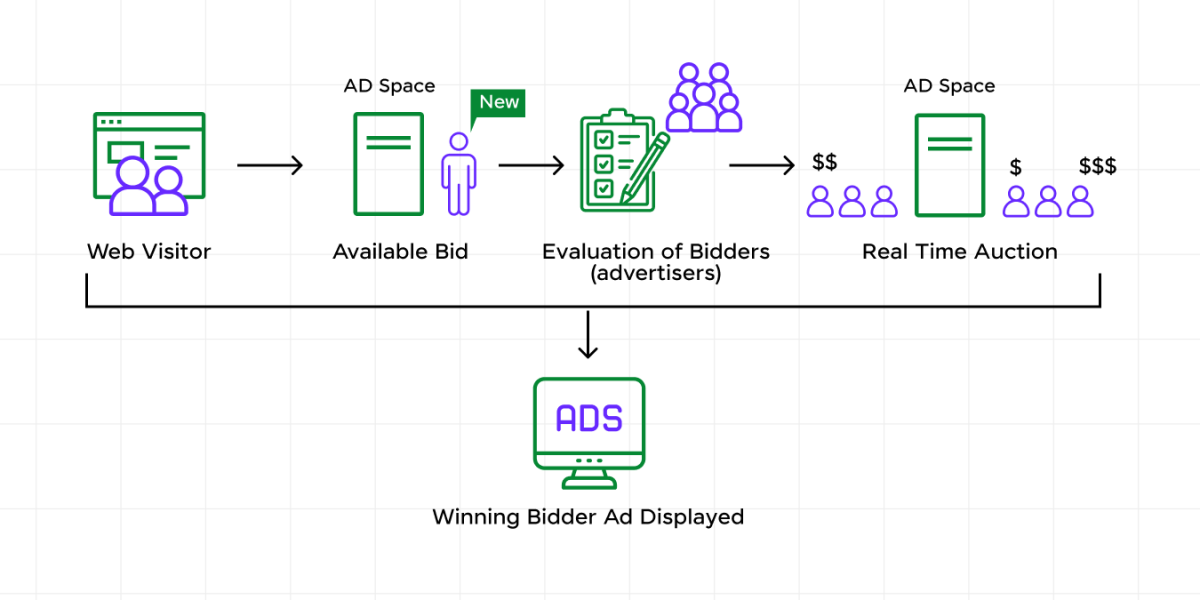
Understanding the mechanics behind programmatic advertising is crucial to utilizing it to its full potential. Let’s understand the step-by-step process that automates and optimizes ad buying and selling, showcasing how programmatic advertising in digital marketing functions seamlessly.
User Visits a Website: When a user visits a website, their presence triggers the programmatic advertising process. The website identifies the available ad space and sends an ad request.
Ad Impressions are auctioned: The available ad impressions are put up for auction through a Supply-Side Platform (SSP). The SSP communicates with various Demand-Side Platforms (DSPs) to notify potential advertisers about the opportunity to display their ads.
Bidding Through DSPs: Advertisers, using DSPs, place bids for the ad impressions. These bids are based on the advertiser’s targeting criteria, such as user demographics, behavior, and contextual relevance. The entire bidding process happens in real time, usually within milliseconds.
Highest Bidder’s Ad is Displayed: The highest bidder wins the auction, and their ad is instantly displayed to the user. This ensures that the most relevant ad, determined by the highest bid and targeting criteria, reaches the user.
Real-Time Data and Analytics: As the ad is displayed, real-time data is collected and analyzed. This includes metrics such as impressions, clicks, and conversions. Advertisers can use this data to make immediate adjustments to their campaigns, optimizing for better performance and ROI.
Also Read: Top 15 Growth Marketing Strategies
Why Use Programmatic Advertising?
Programmatic advertising in digital marketing offers numerous advantages that make it a preferred choice for advertisers looking to optimize their campaigns. Let’s read about the multiple benefits it can bring about:
Efficiency and Time-Saving
One of the primary benefits of programmatic advertising is its ability to automate the traditionally manual ad-buying process. This automation reduces the time and effort required for negotiations and placements, allowing marketers to focus more on strategy and creative development. The result is a more streamlined and efficient ad operation.
Improved Targeting and Personalization
Programmatic advertising leverages real-time data and sophisticated algorithms to deliver highly targeted ads. By considering factors such as user behavior, demographics, and interests, programmatic ads are personalized to each user. This increased relevance enhances user engagement and boosts conversion rates.
Real-Time Data and Analytics
Access to real-time data is a significant advantage of programmatic advertising. Advertisers can monitor the performance of their campaigns as they happen, allowing for immediate adjustments and optimization. This real-time feedback loop ensures that campaigns are continuously refined for better results.
Know More About 10 Best Business Analytical Tools for Digital Marketing
Cost-Effectiveness
Programmatic advertising often proves to be more cost-effective than traditional methods. By targeting specific audiences and utilizing real-time bidding, advertisers can control costs and ensure that their budget is being spent efficiently. This approach reduces wasted impressions and maximizes ROI.
Scalability and Flexibility
Programmatic platforms offer unparalleled scalability and flexibility, allowing marketers to adjust campaigns quickly based on performance data or shifting market trends. This adaptability is crucial in the fast-paced digital environment, enabling advertisers to scale their efforts efficiently.
Also Explore: Top Digital Marketing Trends
Trends in Programmatic Advertising
Staying updated with the latest trends in programmatic advertising is crucial for leveraging its full potential. These trends highlight the dynamic nature of programmatic advertising in digital marketing and provide insights into where the industry is headed.
Contextual Advertising
With the decline of third-party cookies, contextual advertising is gaining prominence. This method places ads based on the webpage content rather than user behavior, ensuring relevance and respecting privacy. This trend aligns with the growing emphasis on user privacy and data protection in programmatic marketing.
Connected TV (CTV) Advertising
Connected TV (CTV) advertising is on the rise as more households use smart TVs and streaming devices. CTV allows precise targeting on large screens, making it a significant trend in programmatic advertising. Brands are shifting budgets from traditional TV to CTV to capture this growing audience segment.
Video Ads
Video continues to dominate digital advertising, with programmatic video ads delivering personalized, engaging content across platforms. The increasing consumption of video content makes investing in programmatic video advertising a key strategy for higher engagement and better ROI.
Privacy and Transparency
As privacy concerns grow, transparency in programmatic advertising is essential. Adopting privacy-first strategies and complying with regulations like GDPR and CCPA build trust and ensure ethical, compliant campaigns. This trend underscores the need for responsible data management in programmatic advertising in digital marketing.
AI and Machine Learning
AI and Machine Learning are revolutionizing programmatic advertising by enhancing targeting, optimization, and predictive capabilities. These technologies enable precise audience segmentation and real-time campaign adjustments, driving efficiency and effectiveness in programmatic marketing.
Also explore: Best Practices in Digital Marketing
Challenges and Considerations in Programmatic Advertising
While programmatic advertising offers significant advantages, it also presents certain challenges and considerations. Understanding these can help you make informed decisions in the domain.
Ad Fraud and Solutions
Ad fraud remains a critical issue in programmatic advertising. It involves fraudulent activities like fake impressions, clicks, and conversions, which can deplete advertising budgets without delivering real value. Combatting ad fraud requires constant vigilance and the use of sophisticated tools such as fraud detection software and verification services. Implementing strict monitoring and using trusted ad networks can also mitigate risks.
Privacy Concerns and Compliance
With increasing concerns about user privacy and data security, complying with regulations like GDPR and CCPA is essential in programmatic advertising in digital marketing. These laws mandate how personal data should be collected, stored, and used, emphasizing transparency and user consent. Advertisers must ensure their programmatic campaigns adhere to these regulations to avoid legal repercussions and build trust with their audience.
Complexity of the Ecosystem
The programmatic advertising ecosystem is complex, involving multiple players such as DSPs, SSPs, Ad Exchanges, and Data Management Platforms (DMPs). Understanding this ecosystem requires a thorough grasp of each component and how they interact. Beginners may find this daunting, but partnering with experienced vendors or agencies can simplify the process.
Choosing the Right Platforms
The success of a programmatic marketing campaign heavily depends on selecting the right platforms and partners. Look for platforms that offer transparency, robust targeting capabilities, and reliable analytics. Establishing partnerships with trustworthy and experienced vendors ensures that your campaigns are effective and that your ad spend is optimized.
Ensuring Quality and Brand Safety
There is a risk of ads appearing alongside inappropriate or irrelevant content, which can harm brand reputation. Ensuring brand safety involves securing high-quality ad inventory and using tools that provide visibility into where your ads are being placed. Setting strict criteria for ad placements and regularly monitoring campaigns can help maintain brand integrity.
Also Explore: 10 Best Marketing Automation Tools For Businesses
Examples of Successful Programmatic Advertising
Programmatic advertising has proven to be a powerful tool in digital marketing, delivering impressive results for various brands. Here are some notable examples that showcase the effectiveness of programmatic marketing.
Google Ad Manager
Google Ad Manager is a comprehensive platform that helps businesses manage their programmatic advertising efforts. By utilizing real-time data and sophisticated targeting options, Google Ad Manager allows advertisers to optimize their campaigns for better performance. For instance, a global retail brand used Google Ad Manager to streamline its ad operations and achieve a 20% increase in ROI by targeting specific audience segments more effectively.
Adobe Advertising Cloud
Adobe Advertising Cloud offers an integrated solution for managing programmatic advertising across multiple channels, including display, video, and search. Adobe’s advanced AI capabilities enable precise audience targeting and real-time campaign adjustments. A notable example is a major automotive company that leveraged Adobe Advertising Cloud to launch a cross-channel programmatic campaign. This resulted in a 30% increase in engagement rates and a significant boost in brand awareness.
MediaMath
MediaMath is known for its robust programmatic marketing platform that provides end-to-end campaign management. The platform’s advanced data integration and dynamic budget allocation features help advertisers achieve optimal results. A leading travel company used MediaMath to enhance its programmatic advertising strategy, resulting in a 25% increase in conversion rates and a 15% reduction in cost-per-acquisition.
Also Read: Top 10 Strategies to Optimize PPC Ads & Boost Sales
Kickstart your career by enrolling in GUVI’s Business Analytics and Digital Marketing Course where you will master technologies including Power BI, Excel, SQL, Tableau, and Data Visualization, and build interesting real-life business-analytics projects.
Alternatively, if you want to explore Marketing Research Techniques through a Self-paced course, try GUVI’s Marketing Research Techniques certification course.
Final Words
Programmatic advertising is rapidly transforming the digital marketing landscape. In fact, according to Statista, programmatic advertising is expected to reach a whopping 779 billion by 2028. This statistic underscores the importance and effectiveness of programmatic advertising in reaching targeted audiences efficiently.
As you explore the possibilities of programmatic advertising in digital marketing, remember to stay informed about the latest trends and best practices. Embrace the power of programmatic marketing to enhance your advertising efforts, optimize your budget, and achieve your marketing goals. If you’ve had a fair share of experience in the world of programmatic advertising, then do share your thoughts with us in the comments section below!
Also, Find Out How to Use Webinars for Lead Generation and Brand Building?
Frequently Asked Questions
To ensure brand safety, programmatic advertising platforms offer tools for monitoring ad placements and setting criteria for where ads can appear. Advertisers can use these tools to avoid undesirable placements and protect their brand reputation.
Programmatic advertising complements other digital marketing strategies by providing precise targeting and real-time data. It can be integrated with social media marketing, content marketing, and email marketing to create a cohesive and effective digital strategy.
Yes, programmatic advertising is versatile and can be used for both branding and performance marketing. It can drive brand awareness through high-visibility ad placements and boost conversions through targeted, action-oriented campaigns.
Advertisers must adhere to regulations like GDPR and CCPA, ensuring transparency and user consent in data collection and usage. Privacy-first strategies and compliance tools help maintain legal and ethical standards.
Success can be measured using metrics like impressions, clicks, conversions, and ROI. Real-time data and analytics provided by programmatic platforms help monitor and optimize campaign performance.























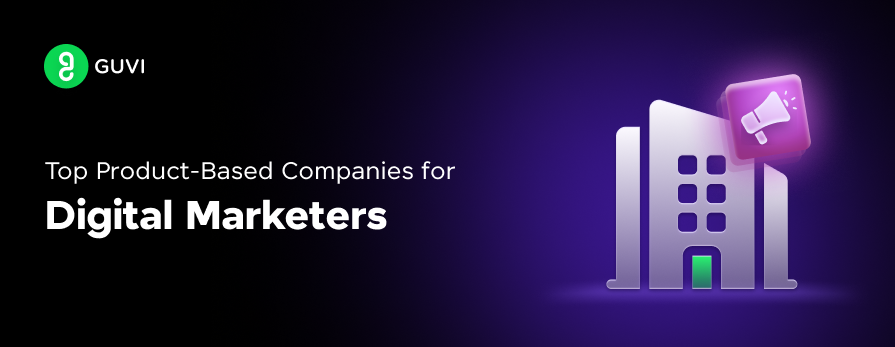



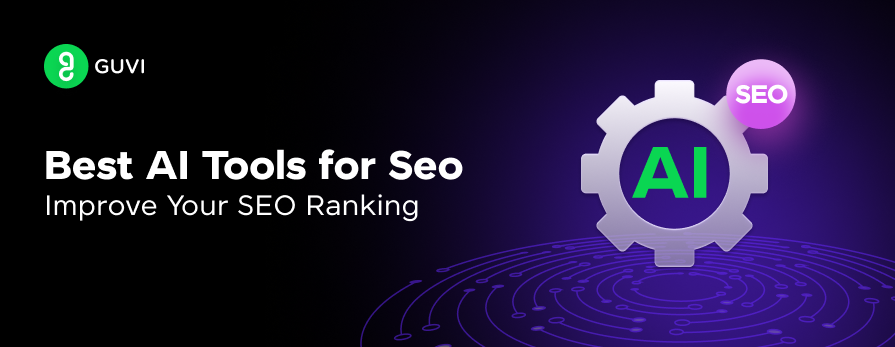


Did you enjoy this article?